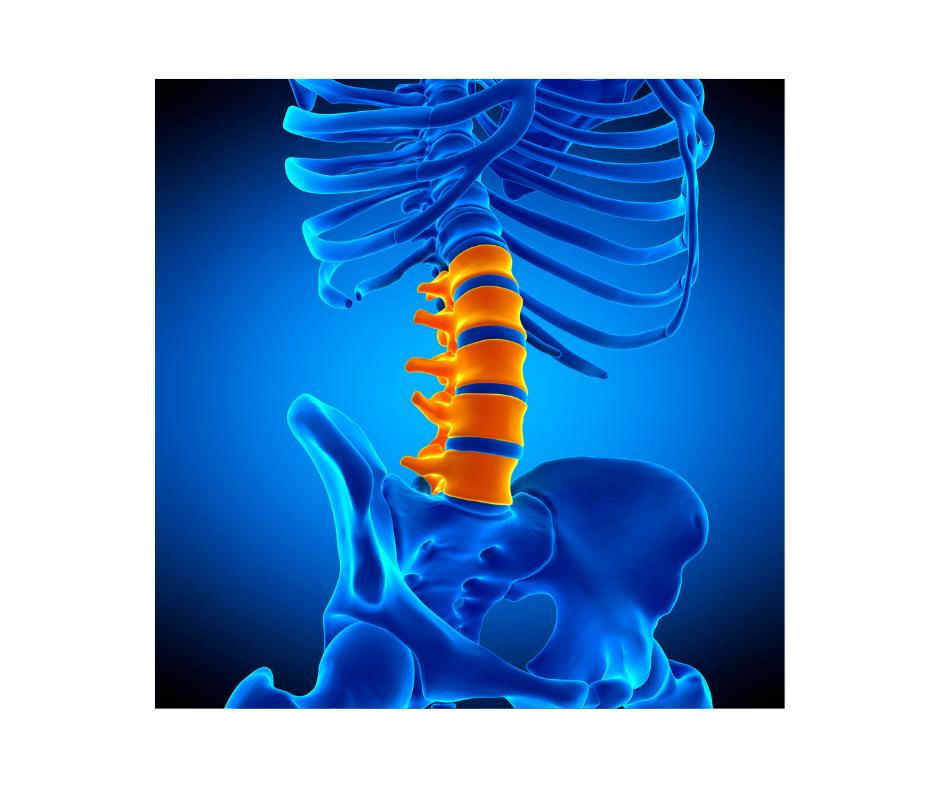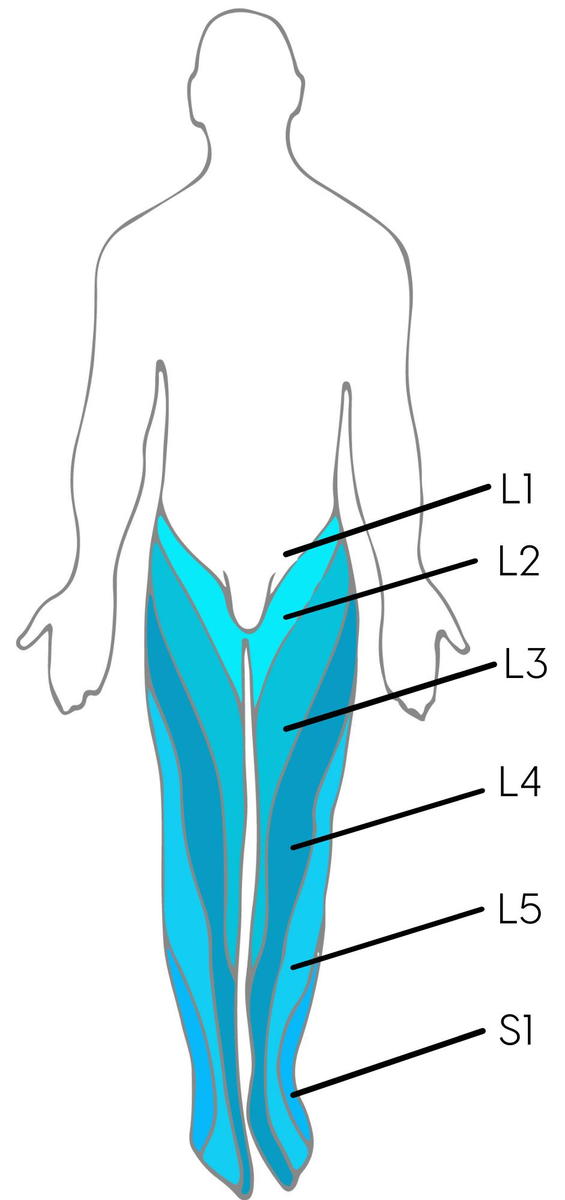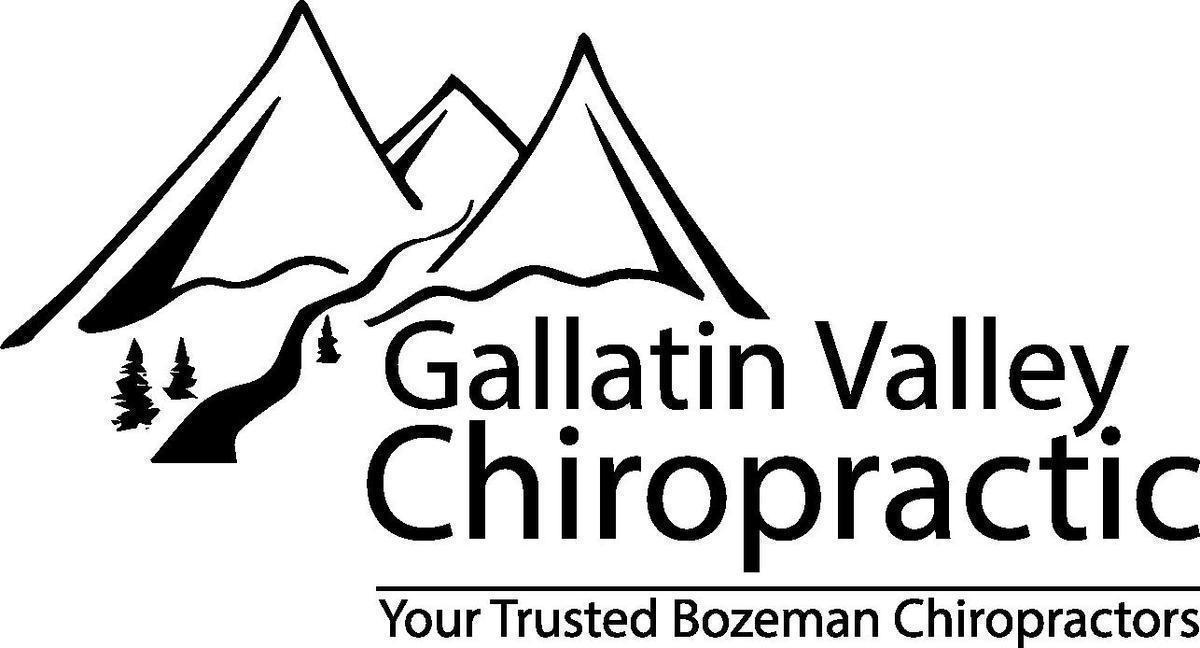Lumbar Spine Nerves
posted: Mar. 09, 2022.

Functions of the Lumbar Spinal Nerves
The lumbar spine consists of 5 large, blocky vertebrae, specially designed for supporting weight. It connects the thoracic spine at the top, to the sacrum and pelvis at the bottom. There are 5 pairs of spinal nerves which exit through openings between the vertebrae. These nerves serve to transmit signals for both sensation and movement to large areas of the legs and pelvic region. A number of things may affect the nerves in this area, from misalignment and aberrant motion, to disc degeneration or arthritis.
The five levels of lumbar spine nerves are listed here, along with their primary functions:
L1
- The L1 spinal nerve provides a small amount of movement signal to hip muscles, as well as sensation to the groin area and genital region. It can also innervate the abdominal internal obliques (part of your ab muscles) involved in trunk rotation and side bending.
L2
- This nerve supply innervates the large muscles in the hip (iliopsoas muscle) which causes the hip to flex. This can make it difficult to raise the knee to the chest or to walk up stairs. L2 can also provide an area of sensation to the front of upper thigh to the groin.
L3
- This nerve supplies motion to the large muscles in the front of the leg such as the quadriceps femoris, which can flex the hip and extend or straighten the leg at the knee. L3 can also provide a sensation to the front of the thigh and down to the medial (inner) portion of the upper thigh and knee.
L4
- This nerve supply motion signal help extend or straighten the knee along with L3. L4 also supplies the muscles that invert the foot and dorsiflex (lift the foot).
- These nerve roots supply sensation to a large area of the leg, from the outside of the hip, down across the front of the lower thigh, through the knee, and inner portion of the calf.
L5
- L5 supplies the muscles that invert the foot, or point the foot down and outward.
- The L4 and L5 nerve roots join with nerve roots from the sacral region, S1, S2, and S3 to create the large Sciatic nerve, which when irritated can cause significant pain, numbness, and burning in the back of the thigh and lateral leg.
Most commonly, issues with the nerve roots in the lumbar spine creates back pain, accompanied by pain in a portion of the leg, potentially with weakness in the muscles that are supplied by the particular nerve that is being irritated or pinched.
There are several causes of pain in the back and/or legs but the most common issues we see in the clinic here are:
- Lumbar or lumbosacral disc herniation
- Referred pain from myofascial trigger points in the back or hip musculature

- Referred pain from an inflamed or sprained sacroiliac joint or lumbar spine vertebral joint
These are some less commonly seen issues that can cause back and leg pain, and are usually seen in an emergency room or specialty primary care setting:
- Tumors of the spinal cord or spinal column
- Infectious or degenerative disorders in the bones of the spinal column, such as cancer or tuberculosis
- Osteoarthritis
- Degenerative issues in the hip and/or pelvis
- Blood clots
To investigate any issues with your low back and nerves, your Chiropractor at Gallatin Valley Chiropractic will take a detailed history of your complaint, ask about associated health history, discuss your activity level during work and recreation, and may also order imaging. In addition, reflexes, muscle strength, and sensation tests may be utilized to properly diagnose your condition.
Chiropractic care is one of the most effective treatments for back pain, and it has also shown to be the most cost effective care option with the best long term outcomes compared to any other treatment! Give us a call at 406-551-2177 to see if chiropractic care might be a good fit for you!
Call us at 406-551-2177
www.Gallatinvalleychiropractic.com
